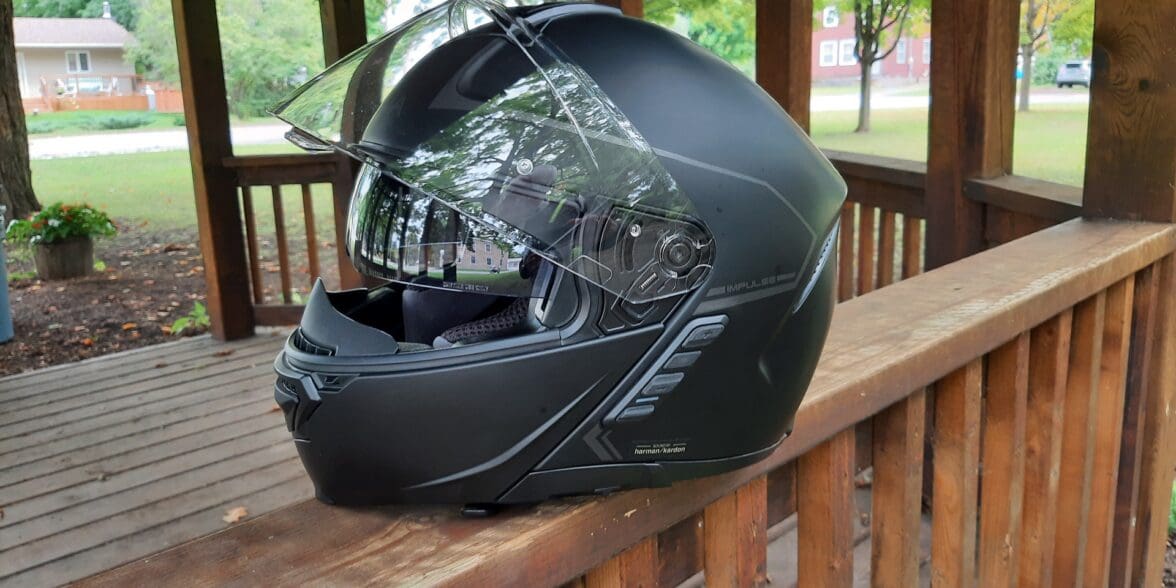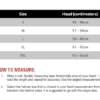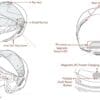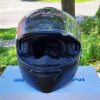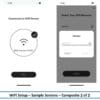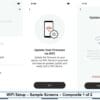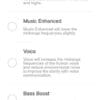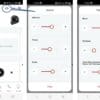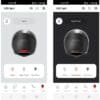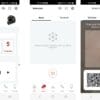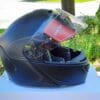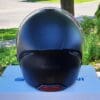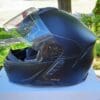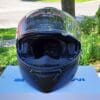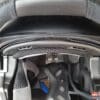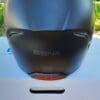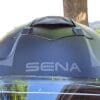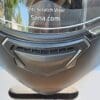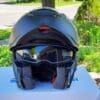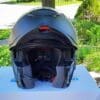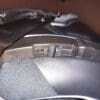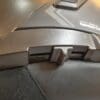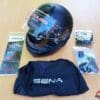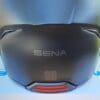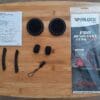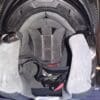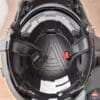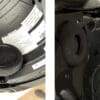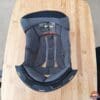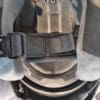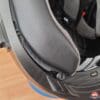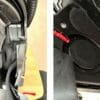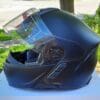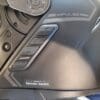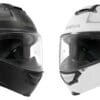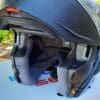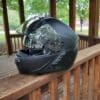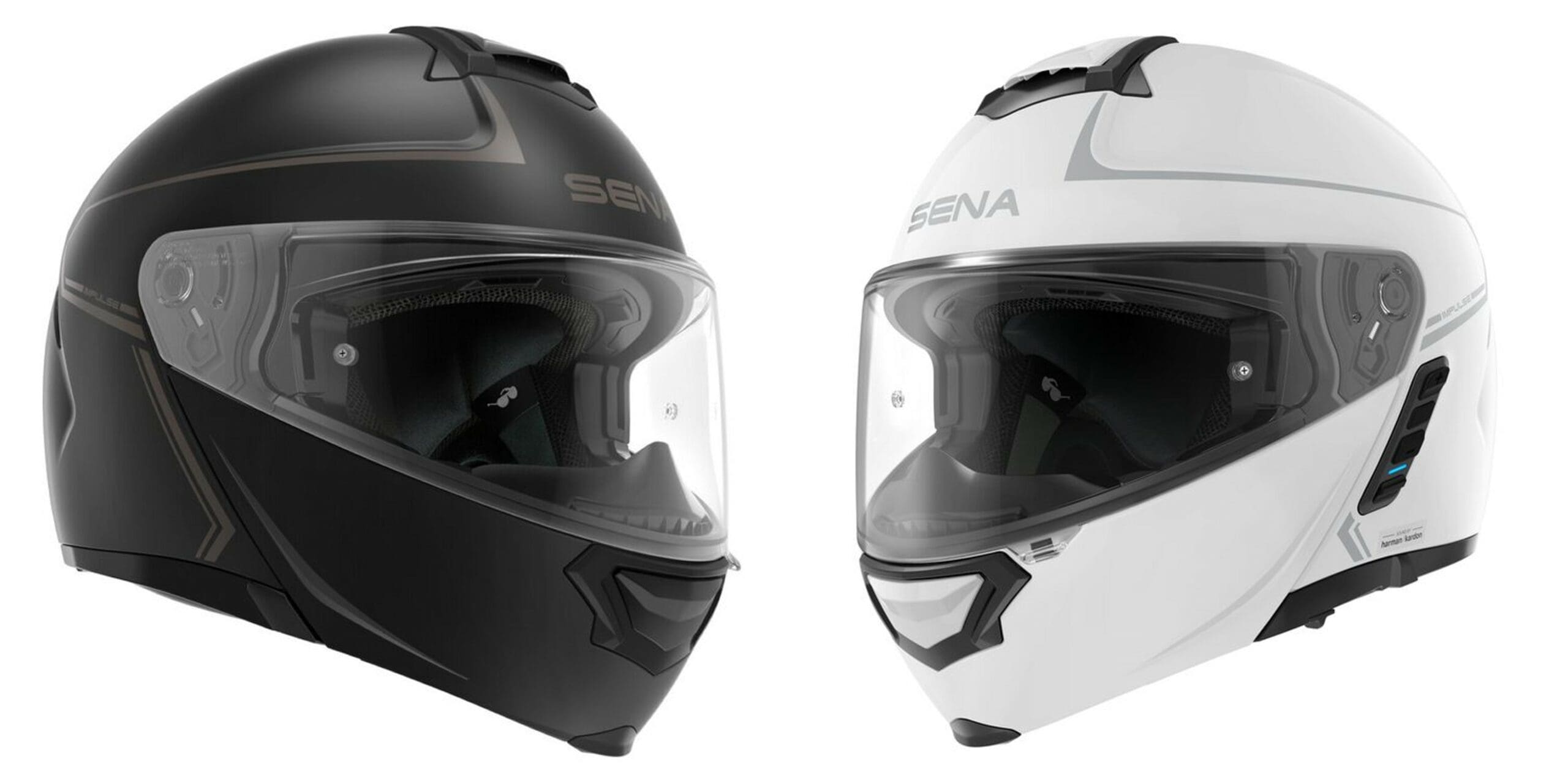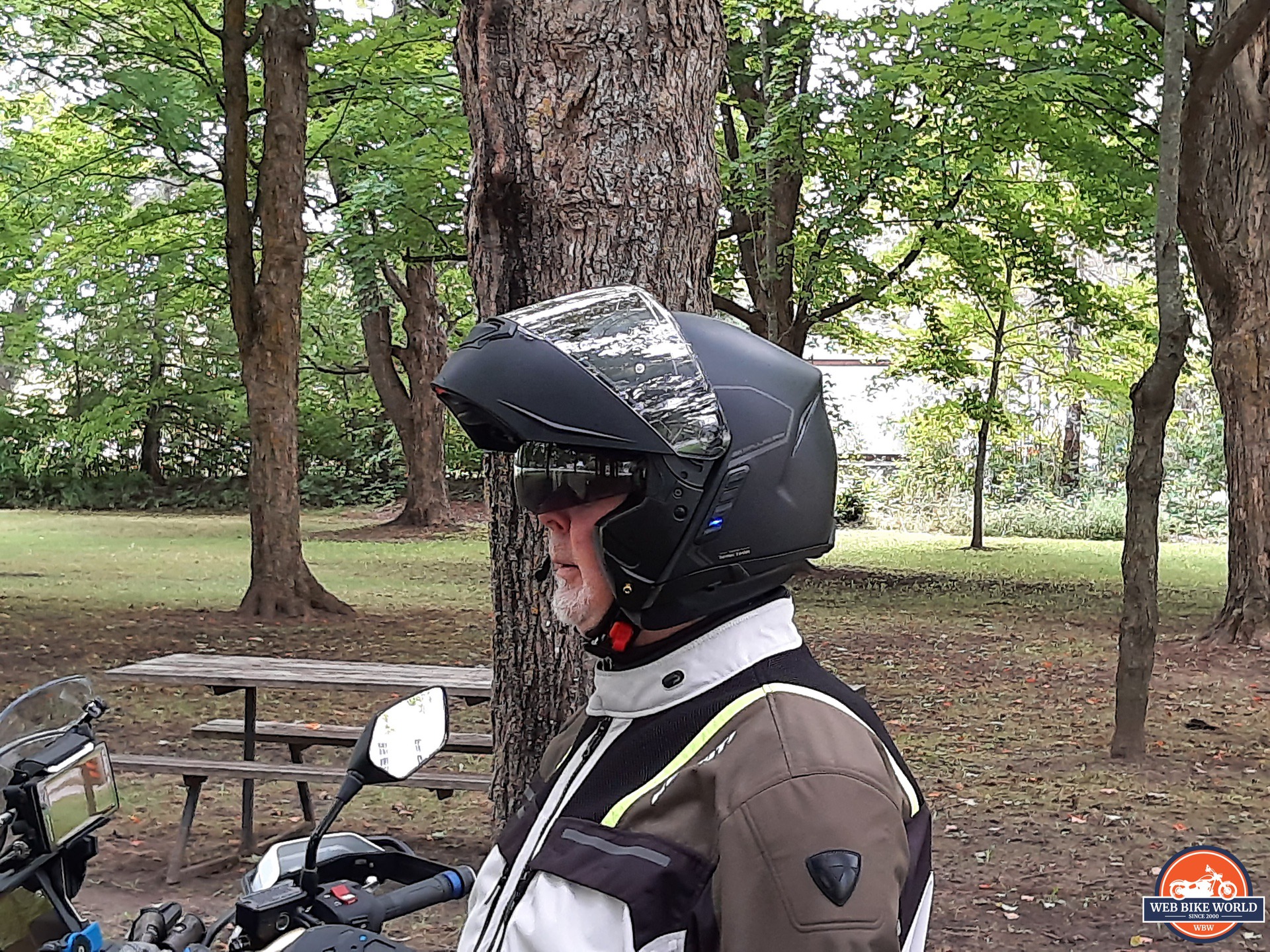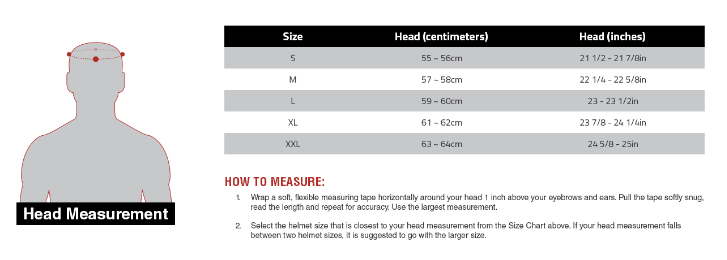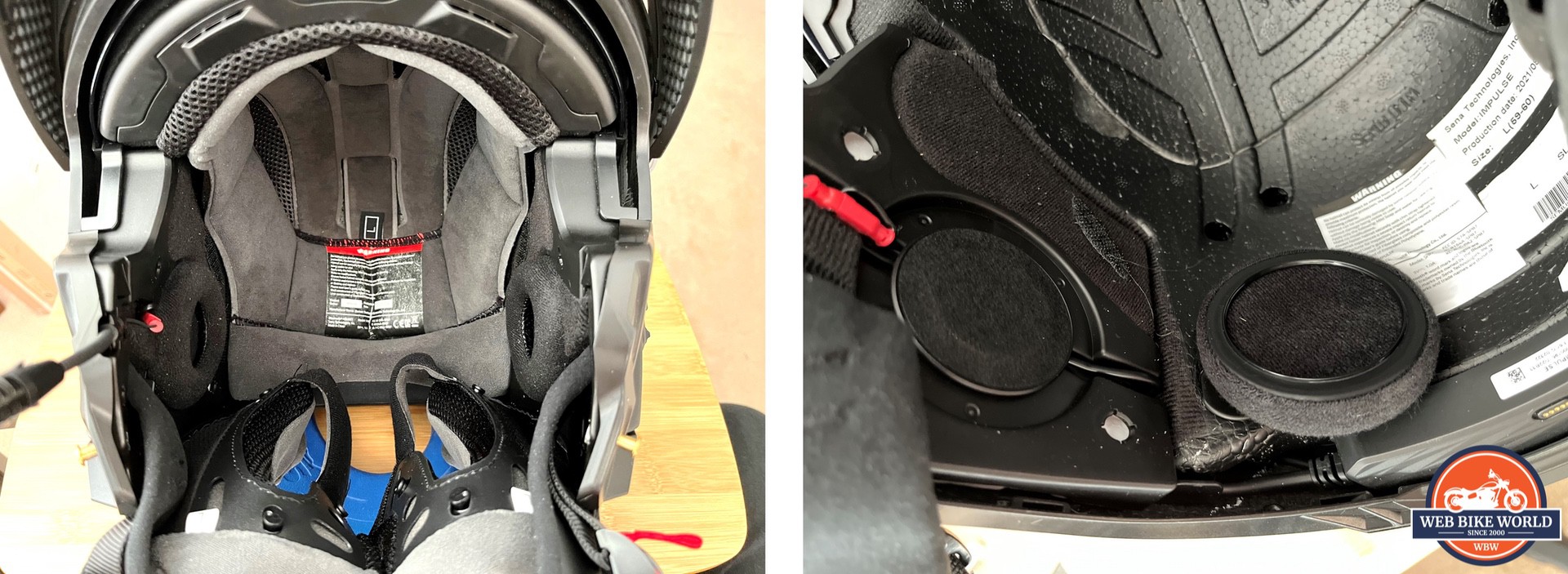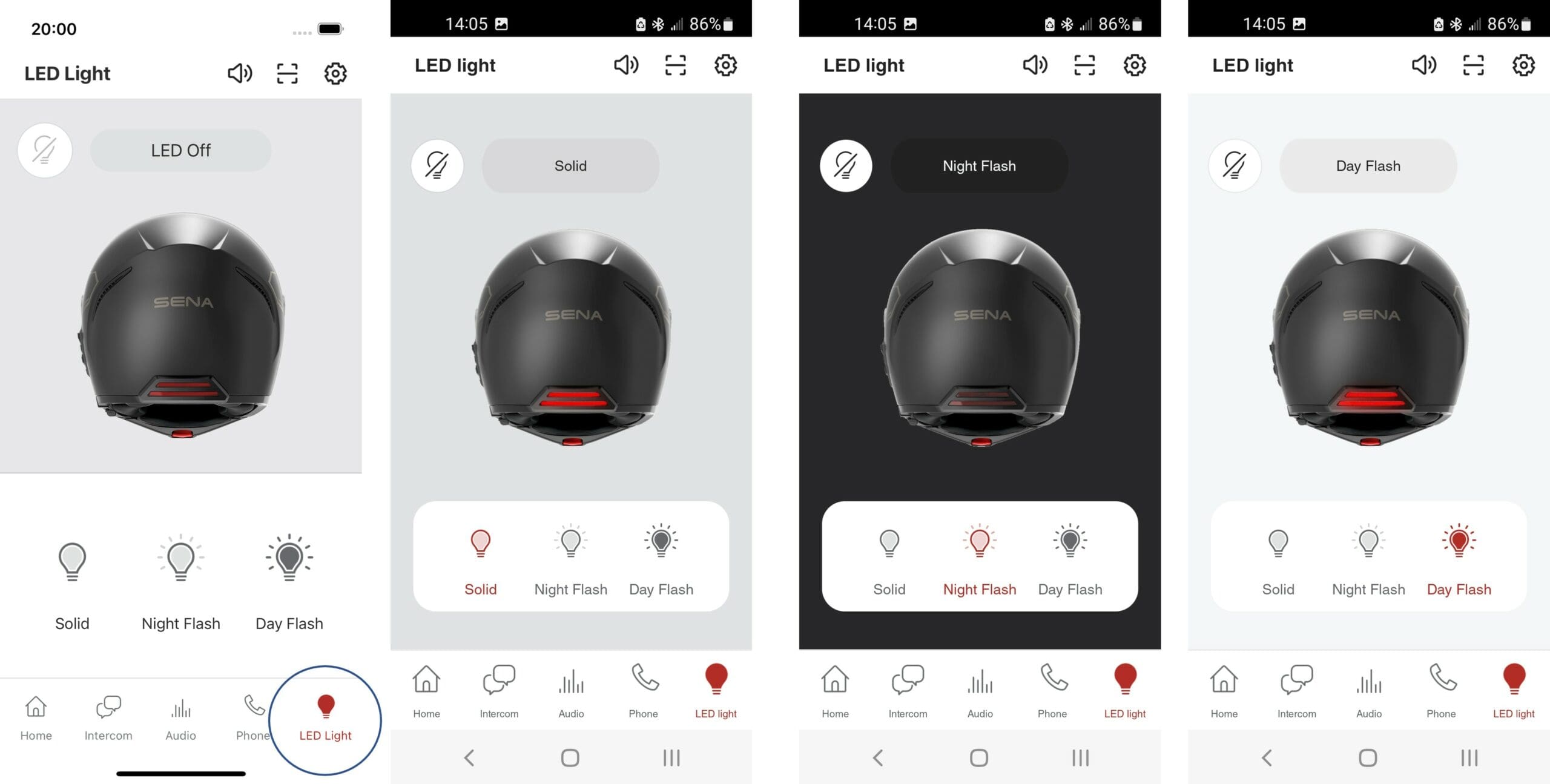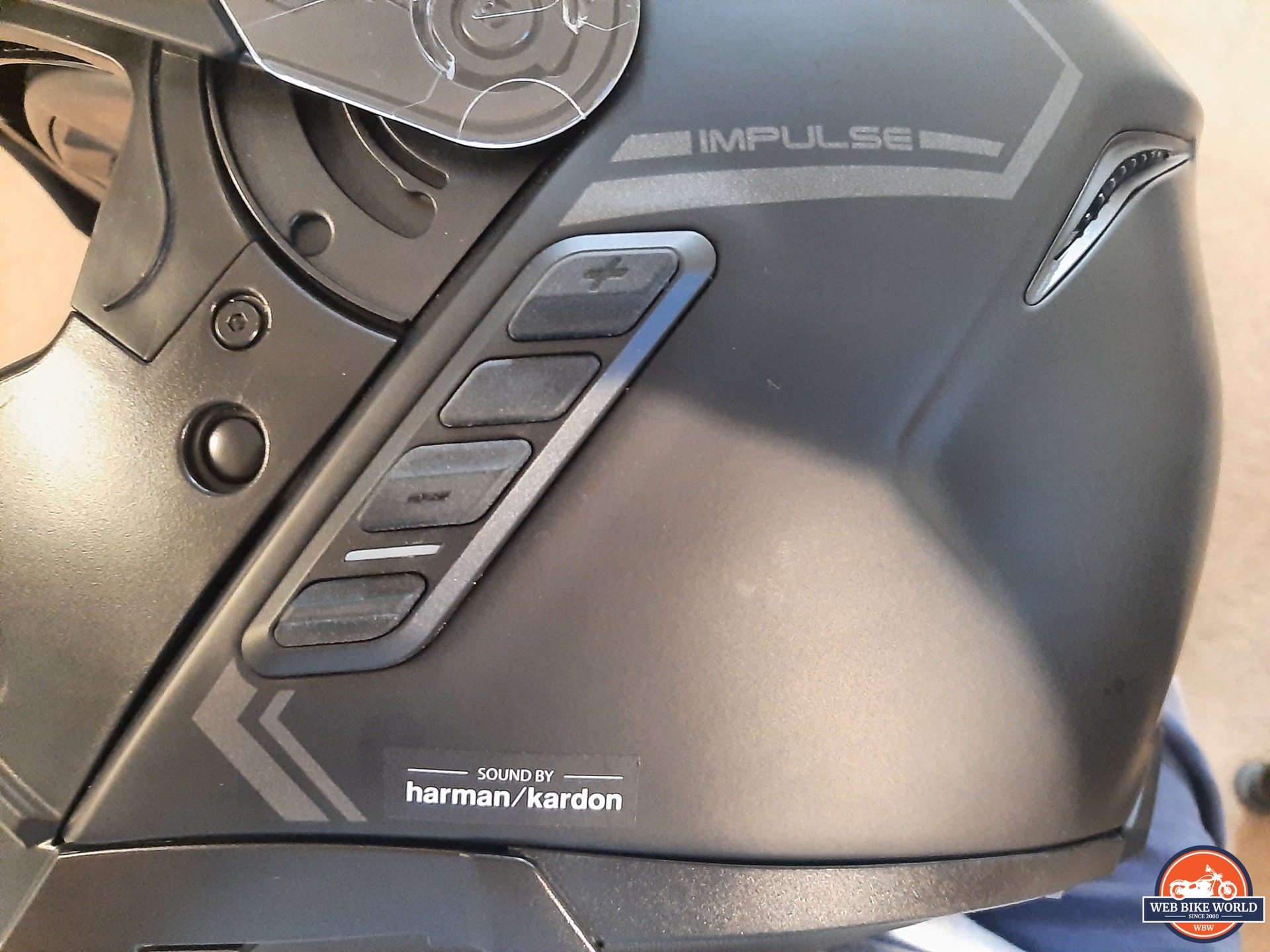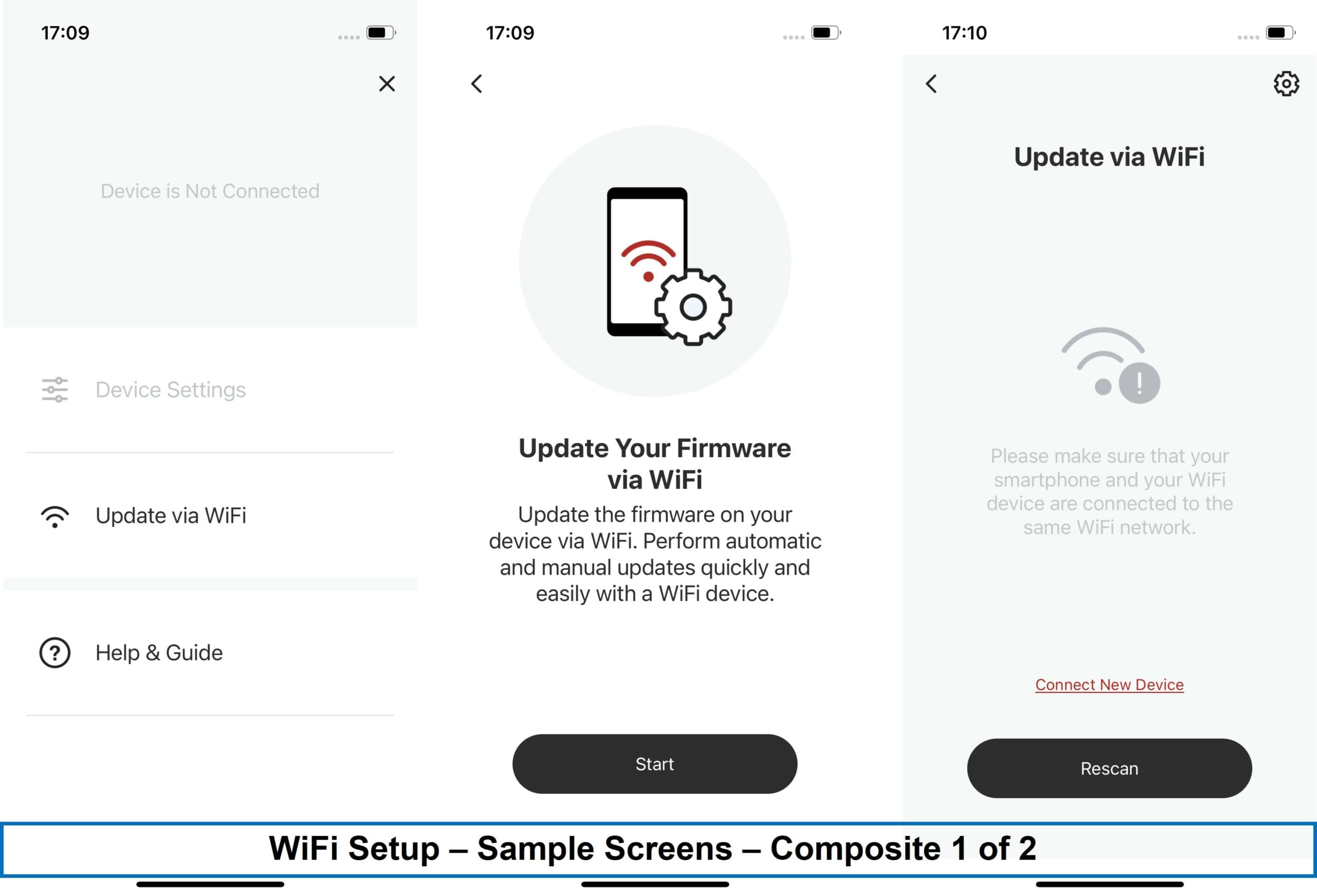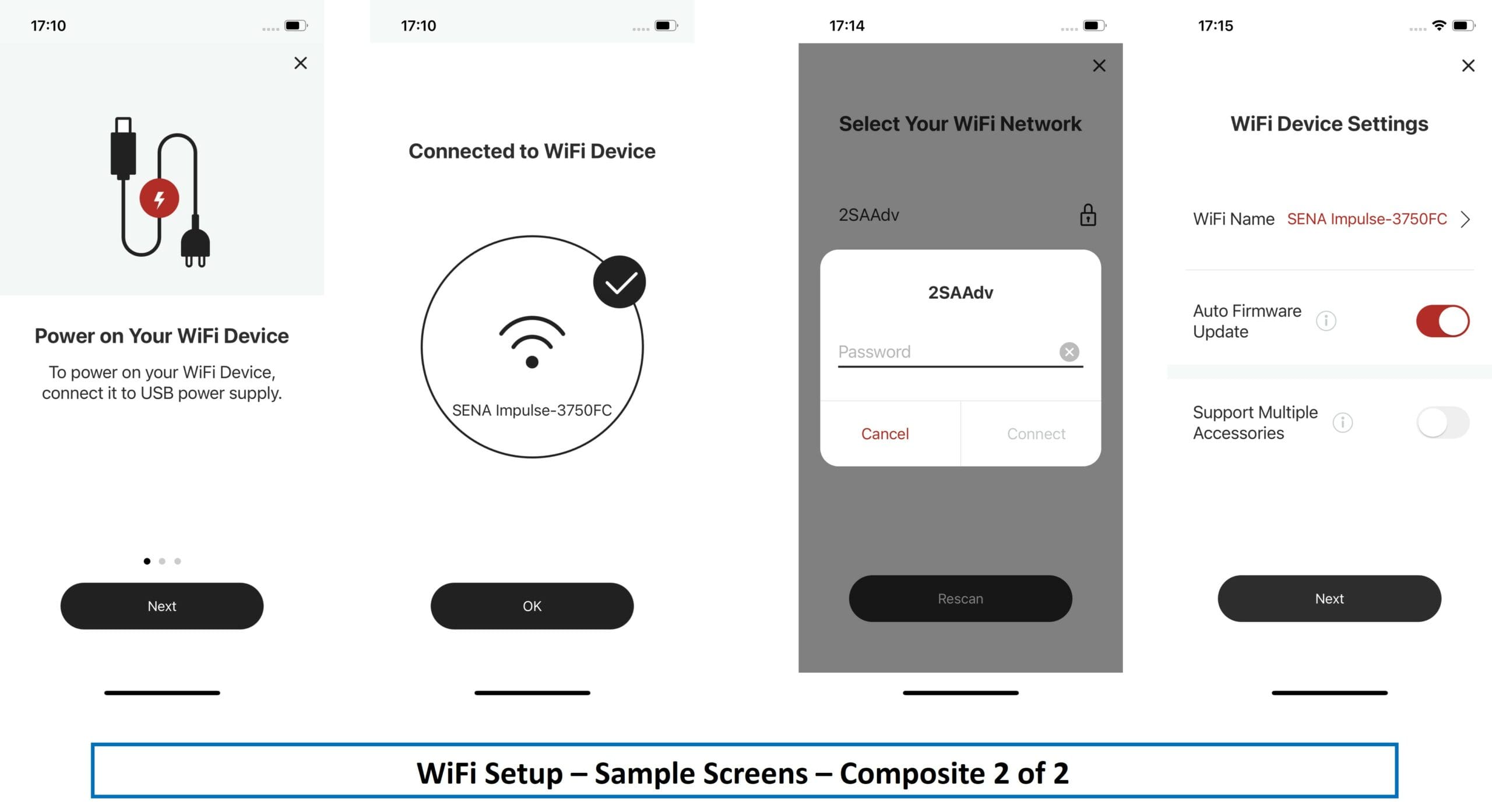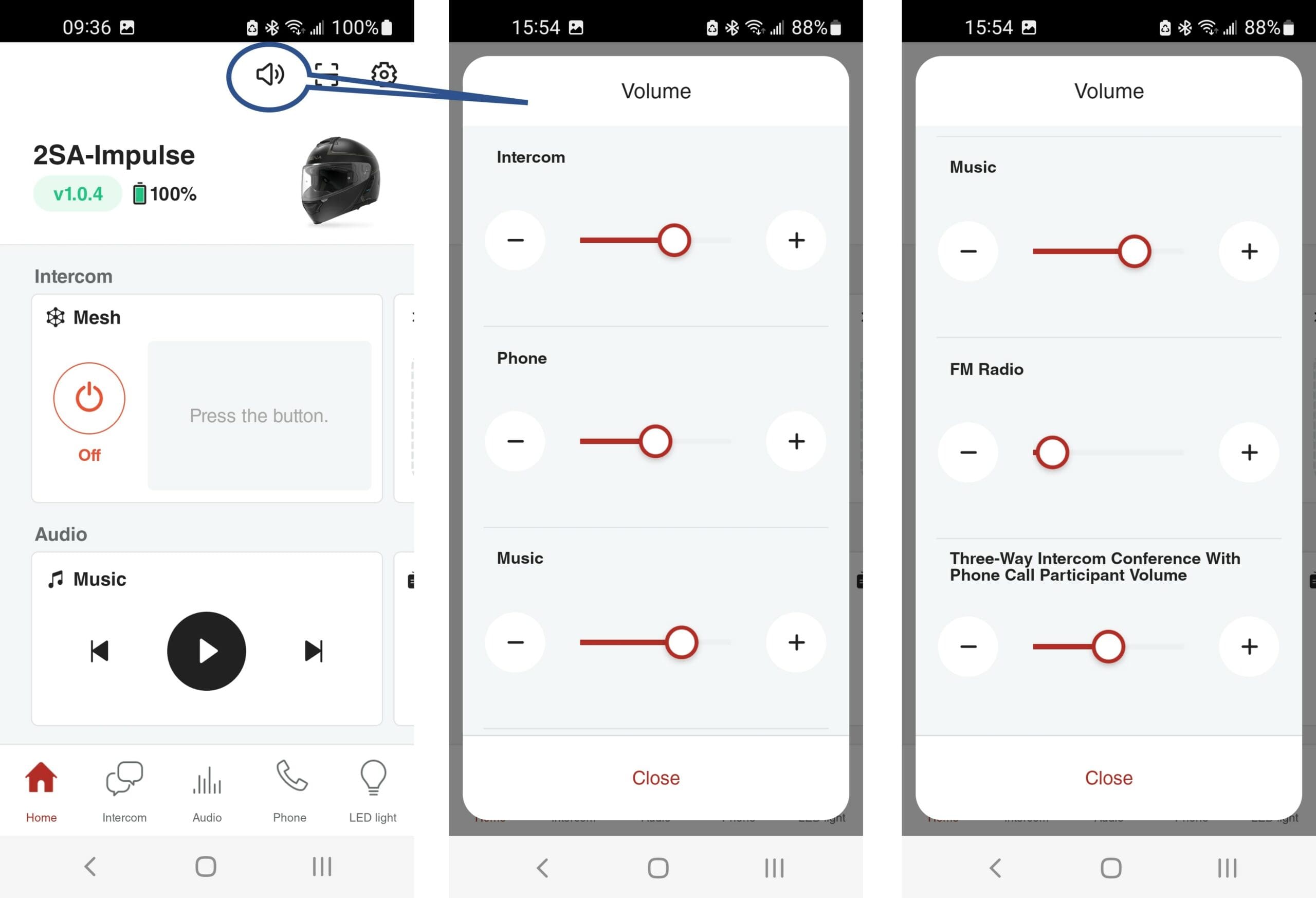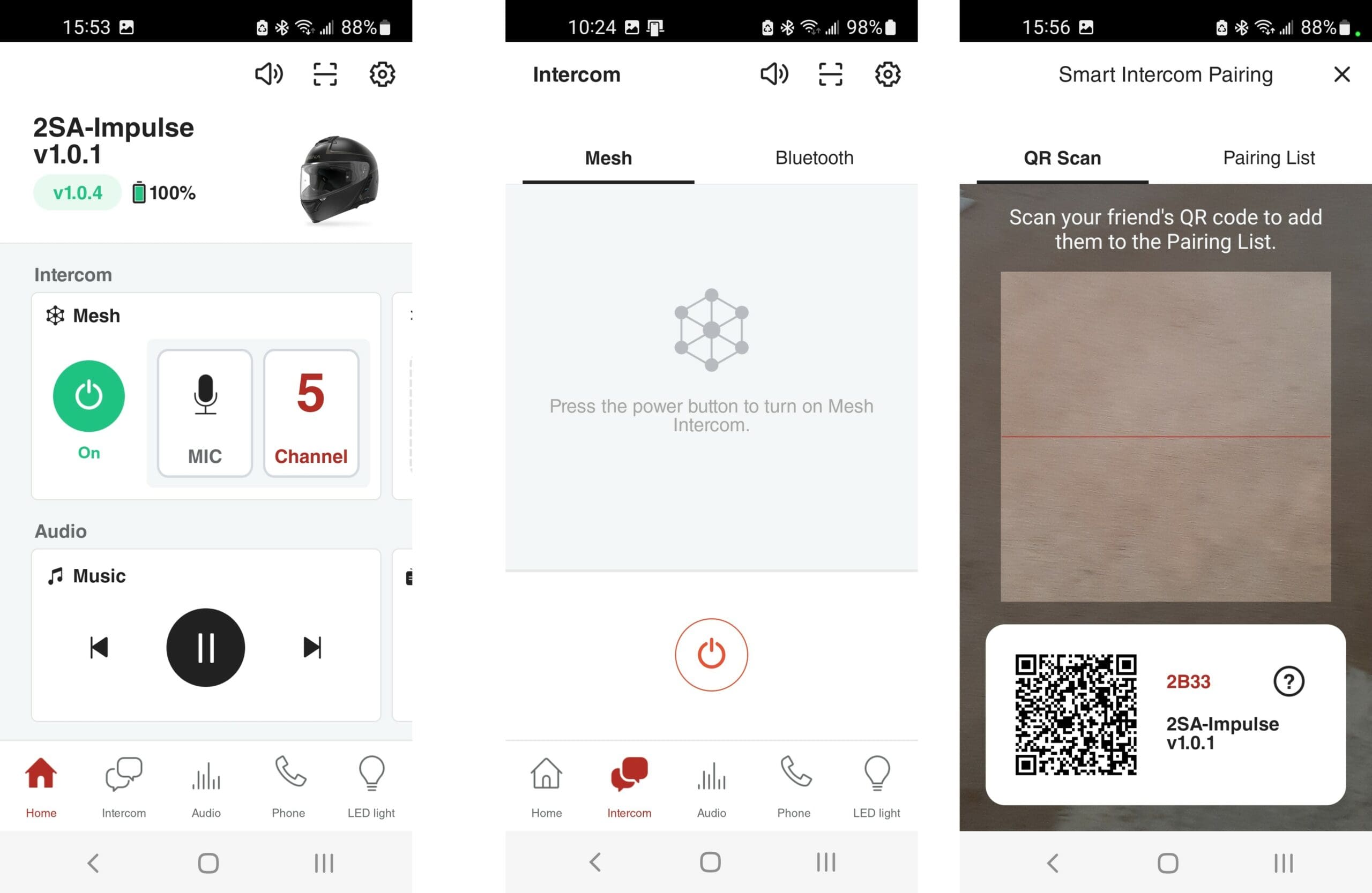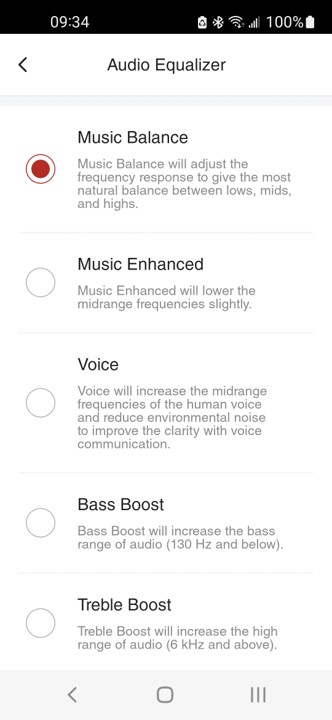Sena Impulse Helmet Review Summary
- The Impulse Modular ‘Smart’ Helmet is part of the Sena Quantum Series line—and packs a lot of features, and performance, into a turn-key intermediate oval fit helmet.
- The long battery life of this helmet supports both bluetooth technology and it’s unique rear-facing LED light.
- WiFi for wireless firmware updates and the latest Mesh intercom technology give this helmet industry-leading comms capabilities.
- While the available colors are limited, the helmet itself offers great features and protection and is well worth its price.
The Sena Impulse Modular Smart Helmet: A True Turn-Key Solution
This riding season, at least gear-wise, is revolving around a trio of helmets. The first one is the Sena OutForce, while the second is the Sena Impulse—part of the 2022 Sena Quantum Series lineup and the subject of this review.
Last but certainly not least is the third helmet, a local procurement, that is hosting another member of the Sena Quantum Series lineup—the Sena 50C integrated 4K camera and communication systems with BT and Mesh 2.0.
All three helmets were brought into use early spring, with riding time divided between them to provide lots of opportunity to fully assess all three Sena products.
This third helmet hosting the Sena 50C system is an HJC i70 full-face helmet in white and, it is proving to be a well-rounded helmet providing a lot of value for the relatively minor investment; it is one of the most comfortable full-face helmets ever used.
See Also: Best Full Face Motorcycle Helmets For 2022
But back to the subject at hand, the Sena Impulse Modular helmet with integrated BT system providing multiple device connectivity, Bluetooth and Mesh-based intercom features and world-class SOUND by Harman/Kardon.
About SENA Helmets
As noted in the Sena OutForce submission, the Sena ‘Smart Helmet’ line has seen some streamlining over the past couple of years, at least in some markets; but it’s also being evolved.
This continued evolution is most evident when viewing the 2022 Sena Quantum Series lineup that includes the full-face Stryker and modular Impulse helmets (DOT and ECE-rated by market) featuring Mesh 2.0 and BT Intercom technology and a unique integrated LED taillight.
Other members of the Sena Quantum Series lineup are updated 50R and 50S intercom systems and the Sena 50C with its integrated 4K camera and Mesh and BT Intercom capabilities; all these systems now feature SOUND BY Harman/Kardon technology.
The Sena helmet listing is indeed shorter with the Open Face and higher-end Full Face helmets with integrated video (seemingly) dropped from the US/NA market listings although earlier releases still show on the international site. The wBW table below lists the current US offerings—newest bolded.
| Helmet Style | Model | BT Version | Features |
| Full Face | Stryker Quantum Series | BT 5.0 | MESH 2.0 & BT Intercom, LED Taillight |
| OutForce (aka Outride) | BT 5.0 | BT (4-way) | |
| MOMENTUM EVO | BT 4.1 | BT & MESH 2.0 Intercom | |
| Modular | IMPULSE Quantum Series | BT 5.0 | MESH 2.0 (Unlimited) & BT (4-way) |
| OUTRUSH-R | BT 5.0 | MESH 2.0 & BT Intercom, LED Taillight | |
| OUTRUSH | BT 3.0 | BT (2-way) Intercom |
** INC = Intelligent Noise Control (Passive & Active Modes) Helmets
Sena Impulse Modular Smart Helmet Design, Innovation & Build
Formed of a premium composite fibreglass shell, the Sena Impulse modular helmet is aerodynamically shaped and smoothly finished; the pivoting chin bar is perfectly aligned and fits tightly to the main shell facing.
Surface inserts including the intake and exhaust ports, chin-bar release, sun visor slider, left-side control module and the unique rear LED taillight are tightly integrated—visually, it all works.
A multi-density multi-section EPS lining is used and the integrated system components including the control module, battery, speakers, microphone, and of course related wiring is cleanly routed or recessed between the outer shell and inner liner—nothing looks unfinished.
The chin bar is well shaped and forms an extremely tight fit with the main shell. It features a recessed but easily accessed Quick-Release mechanism with positive action for opening and closing. All components are strong, well placed and work effectively together.
A reinforced adjustable micro-ratchet chin strap also provides quick-release with its small but readily found Red-coloured spring-loaded release pull. The right-side strap is easily adjusted to get the critical tension and security of the helmet. Lightly padded covers on the straps are comfortable and do not rub or irritate, at least for this rider.
The well-shaped 22cm x 11.5cm vision-friendly eye port and the usual support and facing sections found on modular helmets are well shaped and fit together without issue including the recess accommodation for the sun visor.
A double layer compression seal finishes off the outer edges of the eye port while a light-weight clean-edge styled shield with left front lift/lowering tab fits tightly to the compression seal.
Ventilation consists of two intake ports—chin and top of helmet, both with open/closed slider controls, airflow channels in the EPS layer and breathable mesh liner fittings to supply air into and through the helmet. Left and right exhaust ports reside under stylized left and right rear inserts.
The cheek pads and headliner pieces utilize laser-cut foam and are removable for washing or replacement; breathable with a quick-dry liner layer. Both the breath guard or deflector and the lower chin curtain pieces are easily removed and replaced.
As is the norm for Sena Smart Helmet offerings, the choices are Matte Black or White. But while the colourways are indeed limited, the available choices reflect a near-perfect finish; it is hard to find any imperfections in the finish, when new and over time as both finishes have proven very durable on all the Sena helmets.
SENA Impulse Modular Smart Helmet Key Features
- SOUND BY Harman/Kardon—Premium Speakers & Microphone
- Modular Helmet Design (designations)
- Intermediate Oval Fit
- Bluetooth 5
- WiFi Firmware Updates
- Integrated Mesh & Bluetooth Multi-Channel Intercom Capabilities
- Pinlock® ready, Pinlock anti-fog lens included
- Retractable Sun Visor
- LED Taillight (switchable using the Sena Motorcycles App)
- Voice Activated Digital Assistant (‘Hey Google’/’Hey Siri’)
- Voice Commands in eight languages
- Unique Magnetic ‘Pogo’ Charging Port
- Sena Motorcycles App
- DOT or ECE 22.05 homologation P rated (market-based)
- Listed weight (medium): DOT—1760g or 62oz and ECE—1720g or 60oz
- Warranty: Helmet Integrity—5 years; Electronics—3 years
Sena Impulse Kit Contents:
- 1 x Sena Impulse Helmet, Matte Black, Large with helmet pouch
- 1 x Sena Charging/Data Cable with USB-A to magnetic pogo connector
- 1 x Sena magnetic pogo connector USB-C adapter
- 1 x flat set of speaker covers (ear cups)
- 2 x microphone sponges (covers)
- 2 x Dummy Cover Chin Curtains (curved black plastic moldings)
- 1 x Pinlock 120 Fog Resistant Lens Insert
- 1 x Sena Impulse Quick Start Guide
- 1 x Sena inflatable helmet stand
Fit & Comfort of the Sena Impulse Modular Smart Helmet
The Sena Impulse Modular Helmet is an Intermediate Oval Fit helmet, with the following Sena sizing chart providing fitment guidance; the chart is based on industry standards.
When first put on the head, the Impulse in Large was very snug and wearing it around the house and garage didn’t seem to bring much accommodation—the assessment was that its sizing was probably a half-size or so small and perhaps an XL would have been a better choice, although my normal sizing is large for almost any helmet ever used…
And after the other rider in the household, who typically wears a medium, tried it on and pronounced it a comfortable fit with a wee bit of room, more doubt crept into the initial assessment.
Well, we all know that first impressions do count… but with helmets, one really does need a bit of patience. And so it was that after a week of actual use, short periods of wear became half, then all-day excursions with the helmet—it is now indeed a comfortable encompassing environment for my large-sized helmet wearing head.
The only observation is the slight pressure felt along the cheek and jaw bones when the chin bar is pivoted down and locked into place, but it’s far less than the (sometimes) obtrusive pressure experienced with so many modular helmets, even in XL sizing.
Long-term experience reveals that the (best) exceptions to this experience are Schuberth, and BMW helmets that fit as well along the chin bar as they do over the rest of the head.
Overall, the Sena Impulse provides a more encompassing but comfortable fit that has an edge of the Sena OutForce and definite lead over other (earlier) Sena Smart Helmets tested, as well as many upper tier products. In many ways, the Sena Impulse is like the Schuberth C3 Pro (on my third now) and that’s not a bad thing at all.
Internal Liner
As noted above, the Sena Impulse’s interior, cheek, and headliner components, are very well laid out, and the initial snugness felt when new, is disappearing with continued use.
Material and feel, along with shape, fit and quality of the liner pieces is first rate, a result of Sena’s constant push for improvements regarding their ‘Smart Helmet’ line and as importantly to provide a well-formed acoustic interior for the SOUND BY Harman/Kardon speakers—it works. More on all of this in a later section…
This build quality is further reinforced in examining and then removing the cheek, liner and chin curtain sections. These pieces have flexible plastic layout sections for fitting, with strong insert tangs used that fit precisely into companion inserts on the interior components; nothing is loose or misaligned.
Also noted is the fact that each of the plastic layout sections are individually marked by side and size with small markers to identify alignment and fitment points. Even the cheek pad snaps look and work far better than the average pieces. Everything reflects great attention to detail and obviously, very good QC.
The thicker encompassing foam ear cups are installed in the helmet with a set of thinner flat foam ear cups packed into the accessory bag. If the user wants to swap the more acoustically oriented pieces out for the thinner pieces, it is a simple matter of pulling the ear cup directly out and fitting the other ones in.
Both the high-cut distinctively shaped malleable Breath Guard that sits in place along the lower inner edge of the eye port and the equally malleable and light padded chin curtain are easily removed and replaced by lining up and pushing in the respective tabs or inserts on each piece.
Eyeglass Facilitation
There is some channeling provided and these points are identified with small eyeglass diagrams on the top of each cheek pad; a nice visual, but effectiveness of the channels is lacking—the channels provided on the full-face Sena OutForce are much better.
An advantage provided by a modular style helmet is that eyewear can (typically) be left in place while putting the helmet on and taking it off—a fact much appreciated by this lifetime eyeglass wearer.
Whether using glasses full time or as needed, facilitation is needed, and it is indeed something that more manufacturers seem to be accentuating. So adequate provision for eyeglass users really shouldn’t be an issue, but it is with the Sena Impulse—the main issue being the helmet’s thick plush cheek and head liner sections.
Given the previously identified advantage for eyeglass wearers, the issue with this modular isn’t as serious as it would be with a full-face helmet and as things are indeed loosening up somewhat, we’ll see how it all works out over the longer term.
Headset Support
As with the Sena OutForce, by virtue of its design and marketing intent, the Sena Impulse has excellent support for a communication system, although the smoothly shaped and smoothly integrated left side housing sports four distinctive user controls rather than the three-button grouping used for the raised BT module on the Sena OutForce.
See Also: Best Bluetooth Motorcycle Helmets
A boom microphone, tweaked by Harman/Kardon, sits out from under the right cheek pad while large and conspicuous SOUND BY Harman/Kardon speakers are precisely fitted into EPS liner recesses covered in soft foam acoustic housings for a close ear fit; simpler flat foam covers are provided in the kit for use as desired.
A detailed look at the integrated Bluetooth-based system with its Mesh and BT intercom features is found in a later section.
Chin Bar, Eye Port, Face Shield & Sun Visor in the Sena Impulse
As with most Sena helmets and for many more on the market eye port size and shaping is receiving attention; the Sena Impulse modular helmet is very good in this regard, providing an unobstructed view—all good for comfort and safety; horizontal and vertical fields of view are essential for continuing situational awareness.
Chin Bar
The chin bar features a centre-recessed easily accessed smooth functioning Quick-Release pin (main shell) and ratchet system (chin bar) that functions positively and smoothly during opening and closing. All the components are well placed and work effectively together. Closing the chin bar and hearing that solid latching and locking action is most reassuring.
Face Shield
The clear face shield used on the Impulse is a bit of a departure from other products in the helmet line, with this one being a rather pliable 2mm thick flat edge component with some slight thickening along the top and a nicely shaped tab positioned left of centre on the lower edge for lifting, lowering, and locking the face shield down for complete sealing.
Distortion-free, scratch and UV resistant, this thin shield fits around and onto the compression edge trim tightly and when fully seated provides a near-flush layout along the lower and side areas—all good for air flow and noise management.
The tightly-fitted face shield with its ratcheting side plates has three positive positions—fully locked, slightly cracked for defog with fresh air mode and fully raised, a position readily discerned by the positive step when opening or closing the shield.
It all works very well. The user can position the face shield as desired at any point between the basic détente positions knowing it will stay in place at traffic or lower speed riding.
Some riders will prefer a more positive multi-step face shield, but with use on different motorcycles with varying cockpit environments and air flow conditions, this face shield never became a problem no matter what position it was used in; at speed, the face shield pushes down rather than up (not usually desired). There is no vibration or noise from the shield.
And the ratcheting side plate Quick Release components work perfectly. Rotate the face shield to fully open, pull down on the side plate spring-loaded pulls and lift the shield off; reverse this procedure to install—positive disengagement & engagement with no muss, no fuss.
Sun Visor
Another obvious up-scale, higher-standard attention to detail component – the sun visor feels, fits, and works like those found on far more expensive helmets that have higher or newer ratings; this is good.
In comparison to the somewhat loose fitted visor and what is perceived as a misplaced activation lever on the Sena OutForce, the Sena Impulse solution is much better in every regard. The sun visor is precisely fitted (no vibration or slack) and the left bottom edge slider (like Schuberth uses) activates smoothly. This solution gets two thumbs-up from this user.
Ventilation
Unlike the Sena OutForce that was comfortable from Day One, the Sena Impulse has taken a bit of time to become truly comfortable; but it has and as such, is now a truly viable helmet for longer term activities, which then brings up the longer-term environmental factors, particularly those related to temperature.
Like the OutForce, the overall ventilation strategy used on the Sena Impulse appears to be low-profile and minimalist—a strategy (or shortfall) that many users might find acceptable on valued-priced helmets but not with more expensive helmets… although that price to feature comparison often falls apart today as well.
So, while the Sena OutForce in white with its minimalist appearing but effective ventilation system provides a very good solution, I was curious to see how the Sena Impulse with its similar approach but in its black colouration would deal with ‘hot’ (and cooler) temperatures and as we head towards fall, the temperature swings provide an accommodating environment.
Chin Intake
This horizontally-placed opening is slightly recessed inside the chin intake housing and quite slim overall but very effective in function. When the intake is open air is forced into the inner chin bar section and directed up to the shield and front of face areas thanks to the upper vents and shaping of the breath guard (if installed).
Air flow isn’t that readily discernible in moderate to warm temperatures from the chin vent although its effectiveness in facilitating cooling and air flow into and through the helmet is. But with cooler morning temperatures one can really feel the temperature differentials at the front and into the helmet.
Management of this intake is simple—the slider is pushed or slid up to close and down to open; a positive feature (although the slider’s gently sloped surface can be slippery, requiring a bit of pressure on it to move the piece up or down, especially with medium to heavy gloves).
Top Intake and Brow Ports
The top intake is another low-profile slotted intake with a larger flow-through opening in the shell and EPS liner. And almost missed are two small brow ports molded into the front mounting section of the head liner piece.
These could either move fresh air from the top intake to the upper front or pick-up air pushed up across the shield and face from the chin bar vent, although from their shaping, it seems they more likely function in conjunction with the top intake. Another ventilation design detail.
Air intake and circulation within the helmet is most noticeable in cooler morning temperatures, so the effectiveness of the whole layout is felt and as temperatures rise, the directional moldings in the EPS liner, the light mesh layer on the headliner pieces and four exhaust ports (two per side) at the rear all add to what is a well managed helmet environment.
To close the top intake, slide the shaped centre section of the insert forward and slide it to the rear to open the intake—positive actions requiring a simple push on the front or back of the piece and easily done with any weight or style of glove.
Ventilation bottom line for the Impulse—very good and easily on par with any of the other Sena helmets, the HJC full-face and likely on par with (or close to) the likewise low-key ventilation strategy used on the Schuberth C3 Pro modular. FWIW, my favourite best-ventilated helmet remains the Arai XD4 helmet—although all those ports do make a lot of noise.
Noise Management
Speaking of noise management, the Sena Impulse gets high marks here, although it’s not as quiet as my current standard, the comfortable and very quiet Schuberth C3 Pro.
The Sena Impulse does gain lots of marks for its aerodynamic shaping, flush-mounted or low-profile inserts, its sleek stealth-look finish and sealing environment when desired. With the chin skirt in place, the intake ports open, and the face shield closed, virtually nothing in the way of air pressure changes or lower frequency booming is noticeable—with or without earplugs.
With the Honda CB500X, Honda ATAS, or BMW R 1250 GS used, all with stock windscreens, the Sena Impulse does an excellent job of insulating without isolating the user. In this regard the Impulse is well ahead of the Sena OutForce and the HJC i70 full face and most other helmets being used. Its (subjective) bottom line scoring here would be a 4 out of 5—pretty good.
As always, the use of well-fitted earplugs is always recommended, especially riding for extended periods of time, even if one feels they have a quiet cockpit or helmet environment.
Integrated LED Taillight
Although not a ‘first’ regarding integration or fitment of a rear-facing taillight, Sena is to be commended to taking another step, perhaps towards a ‘smarter’ helmet or at least one that adds an overlooked requirement regarding rider conspicuity.
Integration of the rear-facing dual-horizontally placed LED outputs is well done, and many viewers see the insert as a simple reflector of sorts, which it can be, but it really is more than that. For users with a back battery pack of some sort, placement of this component will not look out of place.
The LED taillight shares the common system power supply, now beefed up of course in consideration of the additional draw from the LED. The LED is turned On or Off using a specific LED screen on the Sena Motorcycles App and there are three selectable output settings—Solid (nominal), Night Flash (nominal with flashing) and Day Flash (high output with flashing).
However, while the intent is obviously appreciated and it is indeed a fully functional multi-mode LED taillight, its effectiveness is limited due to its limited output or visibility especially in daylight (with or without direct sunlight). I leave the LED tail light turned on in the Day Flash mode as it has the highest and most conspicuous output.
Both the inView Helmet Brake & Turn Signal System and the Brake Free (a favourite) have far better output although the former is motorcycle-powered whereas the latter is self-powered and offers three very bright output patterns; if Sena can crank up the output (appreciating shared battery consumption) this value-added safety feature would be even better.
Safety
Like all Sena helmet offerings, the Impulse is designed and built to high standards for multi-market testing and subsequent certification, including DOT and EC 22.05, with the homologation ‘P’ (protective lower face cover) rating.
The DOT or ECE rated Impulse is engineered with a convenient modular helmet design for user convenience and uses a lightweight fibreglass shell with balanced components to reduce overall weight and minimize load on the user.
A heavy-duty pin and latch mechanism for the chin bar lock takes a positive action to open and seemingly latches fully with minimal effort—strong and confidence-inspiring.
The Sena DOT version Impulse does not carry or list the ‘P/J’ certification that would indicate helmet integrity regarding whether the chin bar is down or raised, nor does it have a specific latch to lock the chin bar up as found on the Sena OutRush-R modular helmet that is Dual Homologated P/J Approved and certified for use with the chin bar open or closed.
But the Impulse does have a positive step as the chin bar is moved to its upper détente position and when the chin bar is in this position its not coming down without significant force being exerted on it downwards. But whether this feature is intended as a general user safety feature or indicates some initiative to gain dual certification is not known. More to follow on this.
Ongoing comfort is indeed a safety factor. The Sena Impulse addresses this requirement effectively with its intakes, in-helmet flow-through and exhaust ports to provide and maintain very good air flow to and around the face and head areas and extraction of this air via the four rear-facing exhaust vents.
A solid smooth-running noise-free retractable sun visor with positive Up and Down stops and precise positioning in front of the face protects the user from excessive glare and is quickly deployable using the easily accessed left bottom edge slider control.
Sena’s Integrated LED Taillight safety feature is a long overdue requirement only addressed by a few over the years, typically with add-on but effective products, like the previously mentioned InView and Brake Free, only two of many to be found on the market.
Virtually everyone involved in bringing or working on integrated ‘smart’ helmets includes a taillight of sorts—the requirement is real, and the technology is readily available. The fact that it has taken so long is lamentable.
Sena’s LED is not the brightest available, but it is part of the helmet layout, very efficient vis-à-vis system battery life, easy to use and relatively effective, but only if the highest output daytime flashing mode is used. There is no excuse for not using it.
The Impulse face shield is Pinlock ready with a Pinlock Fog Resistant (Clear) 120 lens is included in the box. As an eyeglass wearer, Pinlock prepared or Pinlock ready shields are very much a safety feature especially in damp or inclement weather conditions where ‘fogging’ of the shield can be prevalent.
A quick release micro-ratchet chin strap is used on the Impulse and while I was raised in a double D-ring environment my experiences now lead me towards this quick release solution.
A helmet equipped with an attached or integrated communications system is or can be key in providing ongoing or emergency communications (Voice Command and Digital Assistant Features) and as such contributes to the safety environment and is particularly related to ongoing situational awareness.
Helmet Weight & Balance
Sena lists the DOT version, in Medium, at 1760g or 62oz, plus/minus 50g (2oz), while the ECE version, also in Medium, is listed at 1720g (60oz), plus/minus 50g (2oz).
The calibrated Pelouze scales and a newer digital scale that can handle up to 100lbs both provided a weight of 1800g or 63.49oz (3.96lbs) for the Sena Impulse (DOT) in Large; not really apples to apples regarding the Sena listings, but a good basis to work from.
Some modular helmets, due to their design and construction, including chin bar, tend to be front heavy, but the Sena Impulse feels neutral overall, although top or back-heavy when the chin bar is fully raised and set into its stop or détente position.
None of the integrated system components, including the battery/LED housing appear to be adding any bias to the helmet either.
Subjectively, despite its weight, the Sena Impulse in Large is not a burden per se while being worn—to the head, neck, or shoulders.
Sena Integrated Mesh & Bluetooth System
Impulse features both Mesh, and Bluetooth (BT) intercom means, providing communications connectivity with any Sena headset and other brand systems using the Universal Pairing feature.
As users of the CARDO DMC, UClear DynaMESH and Sena MESH capable systems know, the mesh solution provides reliable, clear, multi-party best-path routing comms connectivity. And the latest iteration of Sena’s Mesh algorithm (Mesh 2.0) with its significant enhancements offers extremely high-quality intercom audio.
Sena BT System Management Tools
The Sena Motorcycles App provides quick easy setup and ongoing management of the Sena Impulse system, including SIP, device configuration and now, WiFi-Enabled (Automatic) Firmware Updating.
With this built-in WiFi connectivity (using the charging/data cable) the Impulse eschews the PC-based cable-connected Sena Device Manager for an (almost) wireless management approach, but only if the WiFi connectivity process is done and set for automatic updating under the App.
WiFi Connectivity
With initial charging of the system the user can set-up and enable the WiFi feature for automatic firmware updating. The system supports IEEE 802.11 b/g/n networks and the (typical) working distance is 10m (33ft).
Note: do not connect the BT system to a USB port on a PC to update the firmware and, do not disconnect the USB cable during an update nor turn on the BT system while updating.
With the helmet connected for charging (which will automatically power off the BT system) the built-in WiFi feature automatically turns on and the LED flashes a rapid Red (or Blue).
Open the Sena Motorcycles App, tap the Settings Menu (wheel) button in the top-right corner of the screen and select ‘Update via WiFi’. From here, follow the basic instructions on the App screens to connect the built-in WiFi, first to the preferred or paired smart device and then to an internet-connected WiFi Access Point or WAP—like a home network.
Although being very familiar with network setup, it still took two ‘Wi-Fi Resets’ (hold the bottom control for 1s, the LED should go Purple for 2s to zero the system) to get the Impulse WiFi profile to show up on the phone and then finally connected to the home network.
But once done, it’s done and since then has been a set-n-forget process. More detail is provided by working through things with the smart device and local WiFi and in reading the minimalist information provided under Section 14.1.2 of the User’s Guide. The two screen composites (above and below) provide some insight into the visuals of it all.
Once the Impulse is initially connected to the outside world via a WAP, courtesy of the paired smart device, the WiFi Device Settings screen identifies the device name used, e.g.—SENA Impulse-3750FC. From here the user has the option of activating the ‘Auto Firmware Update’ and the ‘Support Multiple Accessories switches.
Enabling the ‘Auto Firmware Update’ provides automatic WiFi updates but if disabled, updates need to be done manually—although this is not explained further and neither the magnetic pogo cable or the accessory USB-C port, which I thought might facilitate manual updating, doesn’t—another query sent off to Sena.
If the ‘Support Multiple Accessories’ is enabled, multiple WiFi devices can access this updating option (an option not yet tested here).
Charging & WiFi Status Visuals
As identified above, the Impulse uses a new charging/data connection layout, starting with the magnetic pogo connection on the rear of the helmet (that is securely sealed when seated) – good for elemental protection, which is kind of a moot point as so, the upscale Impulse system doesn’t seem usable on the go, like so many new systems today, it just down when connected to any charging source; a frustrating condition!
With WiFi connectivity and firmware updating features onboard, additional visual status cues from both the small LED and the integrated taillight (aka the Firmware Upgrade Status LED) are utilized—all described in section 14 of the User’s Guide—a good thing to read.
Other Initial Things
Charging needs to be done before the integrated system is used, but with the Sena Impulse a different approach is needed which dictates that a PC-based USB port should only be used for charging purposes and not as part of the firmware updating process (see note under WiFi Connectivity above).
Power On/Off and Battery
Press the Plus and Centre buttons for one second, repeat this step for Off. For the battery level, power the system up, after the first long and short Blue flashes from the LED, either four (charged), three (mid) or two (low) Red flashes will be shown. When the battery is low, the ‘Low Battery’ announcement is heard.
Volume
Press the Plus button to increase or the Minus button to decrease volume. Each audio source can be set for the desired audio level by direct adjustment using the module controls or using the real-time volume control sliders accessible under the Sena Motorcycles App (shown in the composite screenshot layout below).
Read the User Guide and Explore the System
For brevity, this space-saving section just lets you know that the integrated system found on the Impulse has lots of features, including excellent almost instant Music-Sharing with another user and lots of other capabilities… including communications.
Setup and management are easy whether via interface controls or using the Sena Motorcycles App. But if not familiar with Sena BT systems some reading and playtime is needed, trust me. So please—read and use the User’s Guide, you may not thank me, but you will thank yourself.
MESH Intercom
Open Mesh
The Multi-Channel Open Mesh Intercom or Open Mesh features the industry-first channel system, like FRS handhelds or CB radios, with nine discrete channels for comms groupings and/or privacy—all selectable using the MIB control on the system or via the App.
Best of all, the default Open Mesh mode is activated with a simple single button ‘click to connect’ (system or App) with no configuration or setup required. It supports a near limitless number of users within a stated range of up to eight kms or five miles (with six riders at optimal separations).
To use it, press the Mesh button, wait for some milliseconds, and start talking—done. I’ve used virtually all forms of Mesh communications over the years (consumer and otherwise) and the Sena implementation is arguably still the best and it’s getting better all the time.
Group Mesh
For focus or private group conversations, Group Mesh Intercom mode is best. Each Group Mesh support a private collective of up to 24 users, with the same range and dynamic network configuration features as Open Mesh; Group Mesh participation is by invitation only.
Bluetooth Intercom
The Bluetooth (BT) intercom medium provides four-user support and provides the ability to work in a dedicated BT link mode (including Universal Intercom pairings) or interconnect to Mesh users to facilitate or ‘bridge’ users into a dynamic multi-user mixed Mesh-Bluetooth comms environment. The Sena Impulse helmet is indeed a communications hub of sorts.
And don’t forget that Smart Intercom Pairing or SIP, found on virtually all Sena Apps, provides a one or two step QR-code-based enabler to pair up compatible systems in seconds and add them to respective pairing lists. Look for the small QR box icon on the app display.
Intercom Range
Mesh 2.0
In mixed natural environments with some roadside brush or distanced taller stands of trees and gentle rolling hills, Mesh link ranges between two users varies between 1.5 to 1.8kms or 0.93 to 1.2mi—on par with or surpassing the standard BT link distances.
With four to five Mesh users in the mix, overall ranges exceeding 5kms (3mi) are achievable and given the ‘best-path’ management of the mesh network, terrain and urban density factors have virtually no impact on mesh comms—just quiet crystal-clear reliable audio.
As described in virtually any discussion of or review of mesh-based communications two things typically stand out: (1) the clarity and strength of the audio between all users and (2) how seamlessly the network adapts to changing conditions (including distance, terrain, and man-made conditions) to keep users connected and communicating.
Bluetooth
Typical Bluetooth user to user range is indeed 1.6 to 2.0km (1.0 to 1.2mi) under open and level or gentle elevation terrain conditions and even when riding within more dense natural surroundings with some elevation changes, BT connectivity remains very good, in the 1.0 to 1.5km (0.62 to 0.9mi) range; some degradation of audio is normal as the maximum range is approached…
Users will find that the BT intercom can be degraded to varying degrees when riding in built-up urban areas although audio typically remains good, just with more noise on the link.
Note—all intercom ranges are verified through speed and time markers, road markings or intersection and GPS map distances.
Voice Command & Digital Assistant
The Sena Voice Command feature has been around for several years and is featured on most of their systems. It has, like other input speech-based capabilities, been evolved to make it more responsive under a wide variety of conditions and built up its ‘library’ so that most available system functions can be invoked by voice to keep the hands on the bars.
While the Sena Voice Command system typically works well, it can be slow or unresponsive (often processor, task and memory-related), although this iteration, supported with a Harman/Kardon enhanced microphone and related audio processing seems to perk its ears up a little better than I remember from previous versions.
While the Sena Voice Command feature is more than usable it still cannot match the Cardo Voice Command feature with its Natural Voice interpretation abilities; while focusing on the Sena Impulse and Sena 50C reviews I brought the Cardo BOLD systems online to have a comparative benchmark when using the Sena Voice Command feature.
Memo to Sena: further investment in and evolution of the Voice Command Feature is needed; it is indeed a weak feature among so many strong ones.
Digital Assistant
If this feature is activated on a compatible paired smart device, then invoking the correct voice call will, or should, have the digital assistant responding in milliseconds; its interpretive capabilities are typically far better than found with the Voice Command to boot and, with newer phones this feature always gets enhancements.
FM Radio
As expected, the Sena Impulse system has an FM radio with RDS AF (Radio Data System Alternate Frequencies) and worldwide region settings for specific radio frequency band coverage. A ten (10) pre-set station memory is available for use via the controls or the Sena Motorcycles App. On or Off is a simple one second push on the Down control.
As a long-time user of an integrated radio in any headset or connected to one via a cable of some sort I still tend to listen to radio audio more than streaming music and when travelling, in not having a constant mobile data connection, listening to local radio stations while passing through coverage areas can provide essential travel data… including road, traffic and weather.
SOUND by Harman/Kardon
The new Sena Quantum Series line of products are Sena’s premiere offerings that include the SOUND BY Harman/Kardon, a company long known and renowned for its audio performance features.
A new headset with new speakers and microphone were created as a collaborative effort with the audio experts at Harman Kardon with the goal to provide world-class sound inside the Sena Impulse helmet.
The new integrated components (along with the Audio Equalizer settings under the Sena Motorcycles App and significant volume enhancements) provides what is touted as “an unmatched audio experience” tagged with the Harman Kardon.
Equalizer & Volume Settings
WOW! Do I now need to worry about the Bass Boost setting impacting the long-term integrity of my helmet? Yes, I’m (likely) exaggerating, but the Impulse helmet really pulses with the beat (put your hand on the shell to experience it) and in a static or quiet riding environment, maximum volume isn’t needed.
While some audio equalizer features on other systems, including other Sena systems work, it’s often hard to discern the differences and as well, a restart is often required of the app or the system. Being able to move between the Sena Impulse/Sena Motorcycles App Audio Equalizer settings dynamically and audibly reveals the discernable differences in the respective outputs.
Over the last almost four months of using the Sena Impulse with its Harman/Kardon audio and related Sena Motorcycles App Audio Equalizer settings it has been a distinct audio joy to use the intercom, steam music or listen to the FM radio; nothing sounds bad in this helmet.
For most riding over a wide variety of terrain and noise environments the Music Balance setting is best overall although if one really wants to keep the beat as noise levels build then Music Enhanced or Bass Boost settings do the trick. For intercom-based activities I usually select the Voice setting—it’s the ticket for boosted filtered audio.
Although the assessments here are subjective in nature and your experiences of course are likely to be different, for the here and now, I have a new helmet audio standard—the Sena and Harman/Kardon collaboration. The helmet audio yardsticks have once again been moved.
My previous top of ladder audio was from UClear with its superb Pulse Pro 2.0 speakers and equalizer, followed closely by the Cardo / JBL collaboration, but these two leading players with their impressive systems and audio now move down on my list.
And some additional information—using the new Sena 50C system with its Harman/Kardon bits and features is proving to be just as satisfying in both modular and full-face helmets.
Final Observations on the Sena Impulse Modular Smart Helmet
Although I would have preferred the Sena Impulse in White—it’s a personal safety-related thing, you won’t be getting this Impulse in black away from me (or us) any time soon—it’s a keeper and for all the right reasons.
With its 699.00 USD price tag, the Sena Impulse sits in the mid to low-upper tier category for pricing; but as a complete turn-key essential piece of personal protective equipment with device and comms connectivity and integrated LED taillight it’s worth the investment.
Try it on, turn the system on, pair your devices, install the Sena Motorcycles App, get the one-step Mesh going (device or App), use the App to activate the LED, select your favourite tunes and off you go accompanied by the superb Harman / Kardon audio—done and done.
Battery Performance & Readout
The 1300mAh battery fitted into the rear centre housing along with the LED taillight does double-duty for the headset and LED taillight and its obviously up to the task.
Half-day runs with Mesh intercom use, some FM radio or music streaming and continuous LED use had the battery showing 65 to 70 percent remaining (shown under the BT profile on the paired smart device, and three Red flashes on boot-up).
A full-ish day of riding (7+ hours) with multiple Mesh users doing the party-line thing and the LED again on continuously still had the battery sitting at around 50 percent; this is darn good IMHO and seemingly indicative that the talk/use times listed by Sena are valid.
Integrated 3-Mode LED Taillight
Sena is to be congratulated for adding this important safety feature. But its overall effectiveness is questionable in anything but low light or night-time conditions – it needs more output (where’s Scotty when you need him?) and to be brutally honest it needs ‘Brake-Free’ level output to achieve real value-added safety feature status and perhaps, a Voice Command. C’mon, Sena; you can do this.
Both the BT and Mesh intercoms perform up to and beyond the stated ranges with some (expected) degradation or reduction in range and signal quality for the Bluetooth, although audio typically stays good until drop-out, with restoral provided as ranges decrease.
Mesh is where it’s at regarding quality, range, adaptability and multi-user facilitation over extended distances and varied terrain; it just works. Initiating Mesh and changing channels is simple although that is one thing not yet covered with Voice Command, unfortunately.
End Note: it’s obvious, unless this user is doing something wrong, that the Sena Impulse isn’t going to be chargeable while in use; even turning the WiFi setting off doesn’t ‘fix’ this. To repeat: it’s frustrating and while not a deal breaker overall, it does make me wonder what the heck is going on—although I have my suspicions.
Bottom Line Statement
The Sena Impulse is the newest ‘Smart Helmet’ modular offering from Sena and it is indeed a big step up from the Outrush-R modular, thanks to its excellent design and build quality, attention to detail (big and little things), integrated BT system with both BT and Mesh intercom capabilities and, last but certainly not least, a set of superb Harman/Kardon speakers and accompanying microphone; audio taken to a new level.
It is a true turn-key solution with superior components; but it does come at a price. Would I buy one, even given the on-the-go use limitation? Yes, I would; one in white is on order.
wBW Specs
- Manufacturer: Sena
- Price when tested: $699.00 USD
- Assembled in: China
- Colours: Matte Black and White
- Warranty: 5 years on the helmet, 3 years on electronics
- Review Date: June to September 2022


